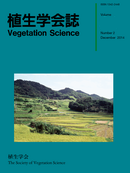Volume 30, Issue 1
Displaying 1-6 of 6 articles from this issue
- |<
- <
- 1
- >
- >|
-
Article type: Article
2013Volume 30Issue 1 Pages 1-15
Published: June 25, 2013
Released on J-STAGE: January 06, 2017
Download PDF (1692K) -
Article type: Article
2013Volume 30Issue 1 Pages 17-24
Published: June 25, 2013
Released on J-STAGE: January 06, 2017
Download PDF (4918K) -
Article type: Article
2013Volume 30Issue 1 Pages 25-35
Published: June 25, 2013
Released on J-STAGE: January 06, 2017
Download PDF (4491K) -
Article type: Article
2013Volume 30Issue 1 Pages 37-49
Published: June 25, 2013
Released on J-STAGE: January 06, 2017
Download PDF (7233K) -
Article type: Article
2013Volume 30Issue 1 Pages 51-69
Published: June 25, 2013
Released on J-STAGE: January 06, 2017
Download PDF (2340K)
-
Article type: Article
2013Volume 30Issue 1 Pages 71-82
Published: June 25, 2013
Released on J-STAGE: January 06, 2017
Download PDF (1158K)
- |<
- <
- 1
- >
- >|
